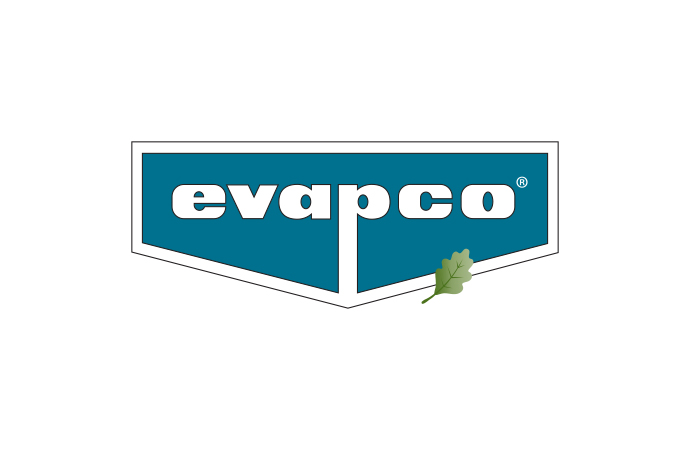Two case studies from Canada show the differences between packaged and central systems.

From left: Jean-Francois Labelle, Congebec; and Darryl Stauffer, Frick
The benefits of lower the ammonia charge in industrial refrigeration are clear: improved safety, less stringent government regulations, improved efficiency and faster installation.
However, the road to these benefits has split into two directions: a packaged system, often installed on a rooftop over the refrigerated rooms, sometimes with multiple packages at one site; or a central system with a machine room, similar to traditional set-ups but altered to enable significant charge reduction. Each has been installed at cold-storage and food-processing plants.
At ATMOsphere America 2018, held in Long Beach, Calif., in June, industry stakeholders had an opportunity to hear about each system type, installed at facilities in Canada. (ATMOsphere America is organized by shecco, publisher of this website.)
Low charge at a high rise
Equipment manufacturer Evapco, Taneytown, Md., is one of the pioneers in North America of packaged low-charge ammonia systems.
One of Evapco’s latest projects has been installing four of the company’s LCR-P Evapcold packaged units at a high-rise cold- storage freezer (-10°F) warehouse in Alberta, Canada. The system, providing 266 TR of capacity, is scheduled to be commissioned in February 2019.
High-rise cold-storage facilities are becoming more popular in North America due to their high storage capacities and use of automated storage and retrieval systems (ASRS), said Kurt Liebendorfer, vice president for Evapco, at ATMOsphere America.
“These are the latest technologies coming into the warehouse industry to eliminate the largest cost component, which is labor,” said Liebendorfer. “These warehouses are essentially 100% automated for material handling.”
The Alberta facility is 110 ft tall and has three air-cooled low-charge ammonia packaged systems installed on the roof, with one additional unit installed above the warehouse's dock/staging area (35°F).
The system's lower charge of ammonia was one of its key selling points, said Liebendorfer. Each of the three units uses 490 lbs of ammonia, for a total of 1,470 lbs. "If this were to have been stick-built, it would have easily been 10,000 pounds, so there is a great reduction in charge for no sacrifice in performance."
Liebendorfer described the penthouse design as a “perfect application for this type of building” because it takes advantage of “eliminating field piping to the top of the roof that would come from a central plant.
This scenario also offers energy benefits, he said.
"By eliminating those long hundreds of feet of pipe runs, you’re eliminating the associated pressure drops and temperature losses," he said “[That] really does improve your system efficiencies.”
In addition, the rooftop packaged units enable additional energy efficiency through better management of “suction levels.”
In a traditional [central] ammonia plant, with “house” suction temperature levels, “whatever your room temperatures are, they have to regulate down to that nearest suction level,” which causes energy losses, he explained.
“With these packaged units, you have a suction level for every room per unit, minimizing your temperature approaches and raising your suction as high as possible, which optimizes your performance."
There's some room for debate, but overall I calculated about 14% savings.”
– Jeff Buxton, PermaCold Engineering
PermaCold Engineering, Portland, Ore., which served as the main design and installation contractor for this project, used SolidWorks Fluid Flow Analysis Software to avoid short circuiting the air flow and determine optimum air distribution. “The target is to keep up air velocity and cover the freezer,” said Jeff Buxton, mechanical engineer for PermaCold.
Buxton also presented a projected annual system operating cost comparison between the Evapcold system and a central system with evaporative cooling, including power for the compressors, receivers and condensers, as well as water treatment (none for the air-cooled Evapcold units).
"There's some room for debate, but overall I calculated about 14% savings against a well built, stick-built ammonia refrigeration system” ($161,888 vs. $183,412), he said. Annual energy savings alone for the Evapcold system was close to 100,000 kWh/yr. The installed system cost of the units was not provided.
Liebendorfer acknowledged that the heavy weight of the systems on the roof was a concern, but added that this was negated by the strength of the high-rise facility’s supporting structure.
“These Evapcold units [are] pretty big, weighing around 48,000 lbs,” he said. “The ability to support that on a traditional building certainly has to be addressed, but with these high-rise buildings, the rack structure is so robust, it was told to me that our units equate to about 17 pallet positions. [That’s] not much given the quantity of pallet positions already in there.”
Frick’s remote condensing units
In 2017, Frick Industrial Refrigeration, a division of Milwaukee, Wis.-based Johnson Controls, unveiled a novel low-charge centralized system (LCCS) that limits the liquid ammonia to rooftop condensers – “remote distributed condensers” (RDCs) – located close to the cooling loads; they feed a small amount of liquid to a vessel that supplies multiple evaporators in or near the storage space. The system employs a an engine room containing only compressors and a control panel.
The RDCs could be adiabatic, plate-and-frame, dry or evaporative. Sensors monitor the RDCs to make sure a sufficient quantity of ammonia is fed to the evaporators. In this scenario, ammonia vapor, not liquid, is distributed throughout the plant.
The ammonia charge in the system ranges from 1.5 to 3 lbs/TR; industrial systems commonly have charge ratios of 20-23 lbs/TR.
The RDCs are what distinguish the Frick system, said Daryl Stauffer, product manager for Frick, at the conference.
“In a traditional system, you have liquid vessels throughout the system,” he said. “We've introduced what we call the RDC where you only have vapor being distributed through the plant – not liquid – so that the condensing is now being distributed to the point of use.” At the same time, the system retains familiar industrial procedures and components.
Frick’s low-charge central system was installed this year at a new 178,000-sq-ft Congebec cold-storage facility in Ontario, Canada, requiring a refrigerating capacity of 430 TR. Congebec, based in Quebec City, Quebec-based, is one of the largest refrigerated cold-storage providers in Canada with 13 facilities.
The Congebec system operates with about 1,000 lbs of ammonia, which translates to about 2.3 lbs/ TR. With five adiabatic condensers, the system supports two 0°F freezer rooms, two freezer/cooler rooms (0°F or 36°F) and a 39°F dock. Eight rooftop freezer (RTF) penthouse evaporators are used in the freezer and freezer/cooler rooms, and eight ceiling-hung air evaporators are employed in the dock area.
Current regulations in Ontario require 24/7 coverage of ammonia-based refrigeration facilities, but the low amount of ammonia in the Frick system may enable Congebec to avoid that cost, said Jean-Francois Labelle, vice president of engineering for Congebec, who spoke with Stauffer at the conference.
“Due to both the low ammonia charge and the full automation of the system that Frick is providing us, we have the chance to reduce the costs of adding an employee to monitor our facility on the refrigeration site to zero,” said Labelle “That's very important for us.”
The Frick system also allows Congebec “to very easily adapt and expand our warehouse,” said Labelle. "That is, by the way, what we are going to do in the next two years. We are adding 70,000 square feet with an additional unit on the roof, so it is important to us to have that flexibility with the system."
Labelle added that the system allows Congebec to
“add value to our business by putting more pallets into our buildings. That for us, is an opportunity to generate additional revenue and that's very important on our side."
Energy efficiency data on Congebec installation was not available at the conference, but Stauffer said that it offers the “flexibility and the efficiency of a central system.”
Stauffer provided data Frick’s first installation of the low-charge central system at a food processing plant in Nebraska. In phase one (2016), the system provided 660 TR using 1,268 lbs of ammonia (1.9 lbs/TR). It included plate-and-frame heat exchangers serving ceiling-hung evaporators for the loading dock, holding cooler and process room.
In 2017 the Nebraska system added 112 TR and 202 lbs of ammonia, as well as two adiabatic condensers. A 40 TR extension was planned for 2018 with one adiabatic condenser added to an existing central ammonia system in a remote location.
This year, Frick also planned to install the low-charge central system at a cold-storage facility in Pennsylvania, supplying 250 TR of capacity. Three adiabatic condensers will feed six ceiling-hung evaporators in freezer and cooling rooms.
Related stories




